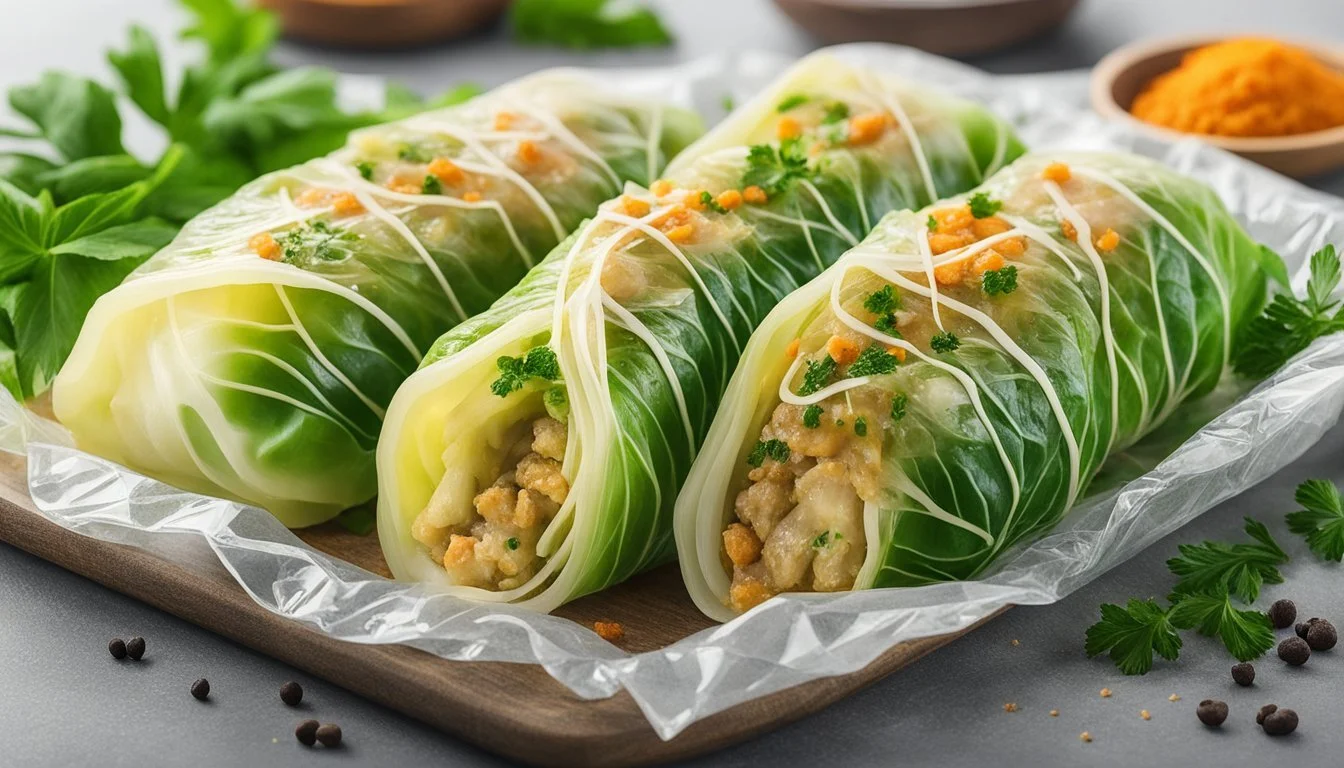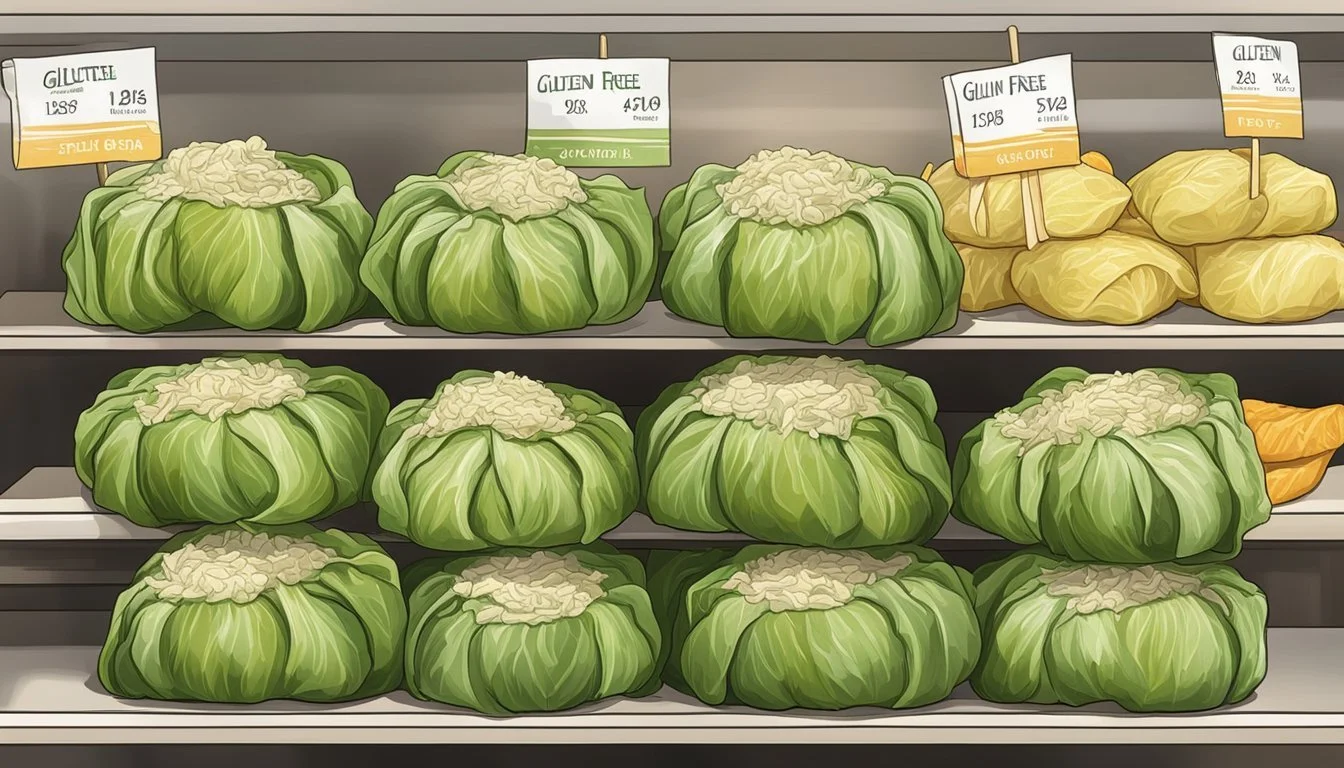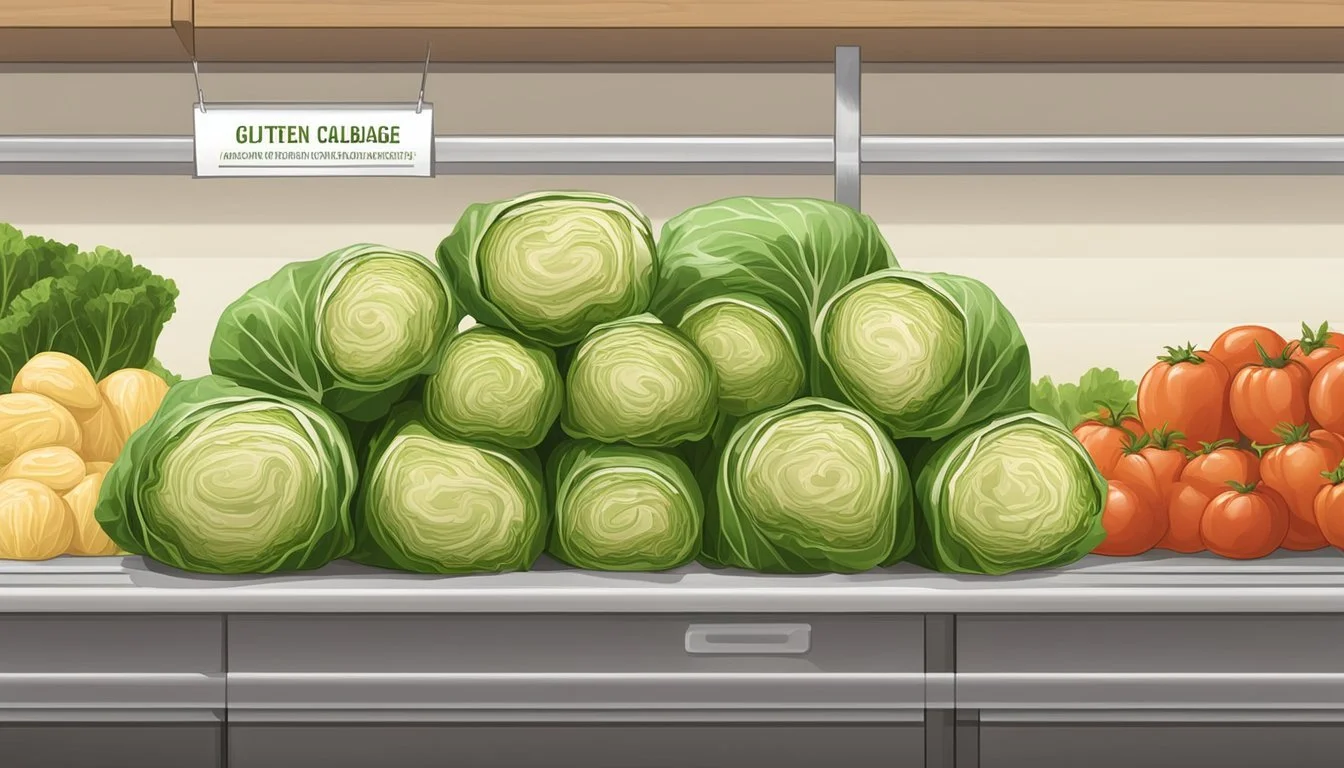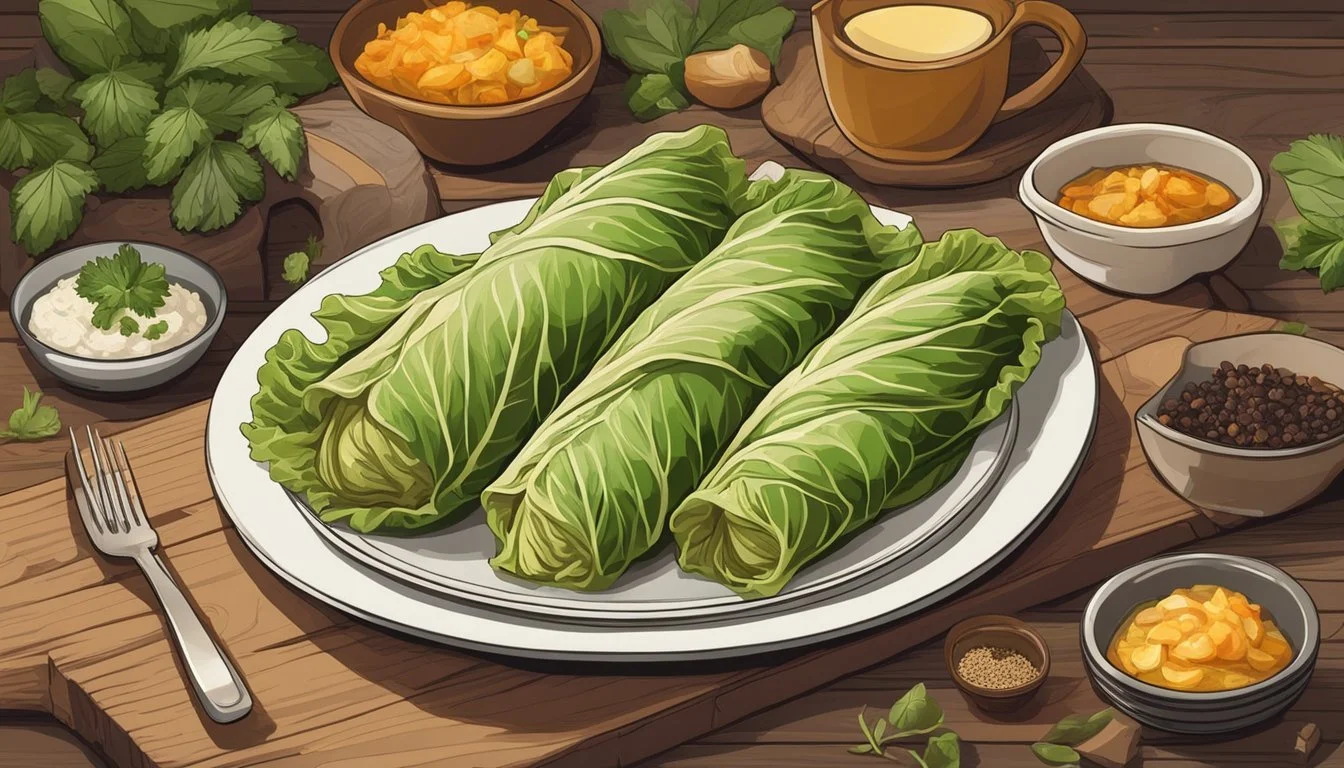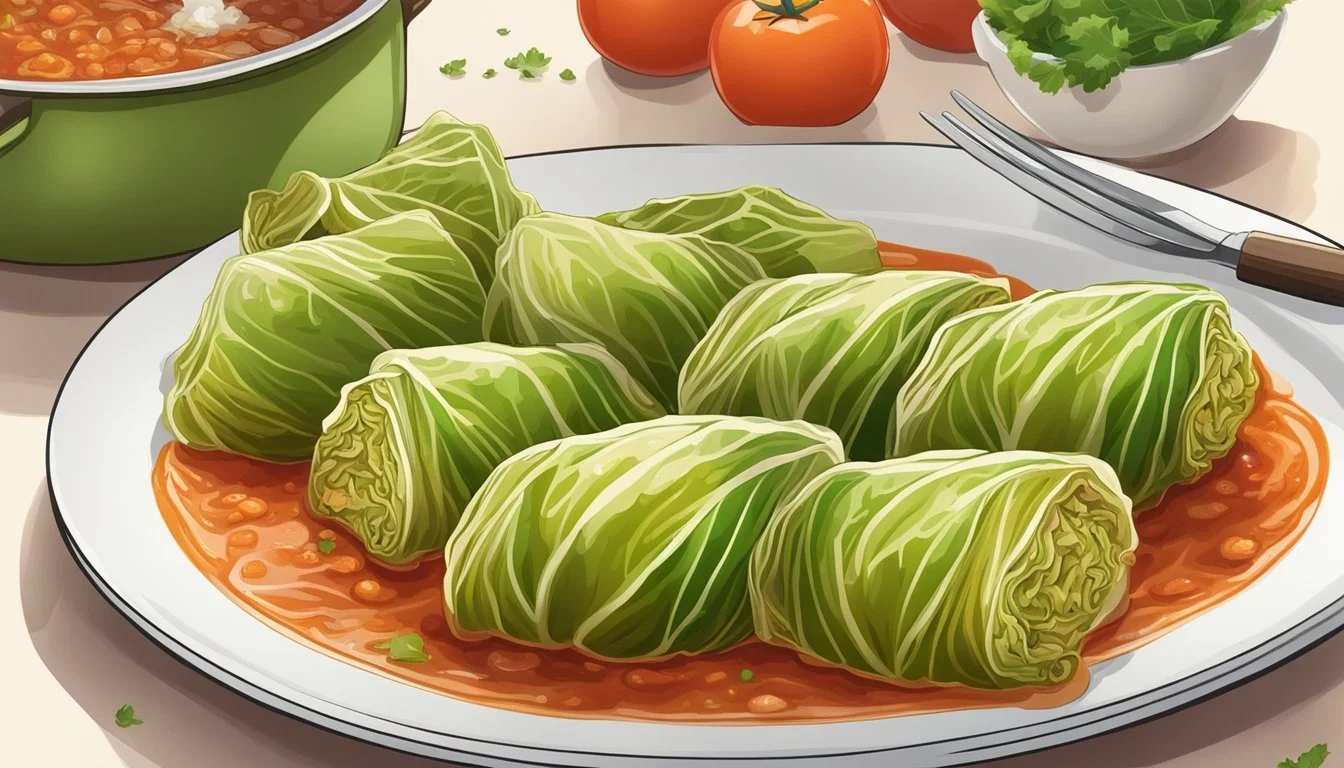How Long Do Gluten-Free Stuffed Cabbage Rolls Last?
Storage Tips and Shelf Life
Gluten-free stuffed cabbage rolls offer a delicious and healthy dinner option perfect for those following clean eating principles. This beloved dish combines tender cabbage leaves with a savory filling made from seasoned ground beef, vegetables, and rice. With gluten-free recipes becoming increasingly popular, many are curious about how long these nutritious rolls can be stored safely.
Properly stored, gluten-free stuffed cabbage rolls can last up to 3-4 days in the refrigerator. Ensuring they are placed in an airtight container helps maintain their freshness. For those who love meal prepping, these rolls can also be stored in the freezer for up to three months, making them a convenient option for quick, healthy dinners.
To reheat, simply place the rolls in an oven-safe dish and warm them at 350°F until heated through. This simple step ensures that the rolls retain their moisture and flavorful goodness. By following these storage tips, you can enjoy the taste and nutritional benefits of gluten-free stuffed cabbage rolls whenever you like.
Basics of Stuffed Cabbage Rolls
Stuffed cabbage rolls consist of tender cabbage leaves filled with a savory mixture of ground beef, rice, and other flavorful ingredients. With some modifications, these can be made gluten-free without compromising taste or texture.
The Key Ingredients
Cabbage leaves are the essential element, softened either by boiling or freezing. Ground beef is commonly used, though other meats like pork or turkey can substitute. Rice provides bulk; white rice or brown rice can be used, depending on preference.
Onion and garlic give aromatic depth, while an egg binds the mixture together. Tomato sauce adds moisture and a tangy flavor, making the rolls deliciously succulent.
Salt and pepper season the mixture. Other spices, such as dill or nutmeg, can be added for extra complexity.
Gluten-Free Adaptation
To ensure the dish is gluten-free, all ingredients must be verified. Meats and vegetables are naturally gluten-free but beware of cross-contamination in preparation areas. Use gluten-free rice, which is typically not a problem, but check packaging to be sure.
Instead of traditional tomato sauce that may contain gluten additives, use certified gluten-free tomato sauce. Always verify that seasoning blends do not contain hidden gluten sources.
Using these precautions allows you to enjoy delicious, safe, and satisfying gluten-free cabbage rolls.
Preparation Techniques
To make gluten-free stuffed cabbage rolls, several key preparation techniques are essential. These techniques include blanching cabbage leaves for easy handling, mixing a well-balanced filling, and rolling the leaves correctly to ensure they stay intact during cooking.
Blanching Cabbage Leaves
Blanching the cabbage leaves is a crucial first step. Start by bringing a large pot of lightly salted boiling water to a boil. Take a whole head of cabbage and remove the core. Using tongs, carefully place the cabbage into the boiling water.
Cook the cabbage for 2-4 minutes until the leaves become pliable but not too soft. Remove the cabbage head using tongs and place it on a cutting board. Let the leaves cool slightly before separating them. Blanched leaves are easier to work with and less likely to tear during rolling.
Mixing the Filling
A flavorful filling is critical to the success of stuffed cabbage rolls. In a medium mixing bowl, combine ground turkey or chicken with finely chopped fresh parsley, minced garlic, and diced onions. Add cooked rice or soaked rice, depending on your preference.
Season the mixture generously with sea salt, black pepper, and any other spices like dill or Italian seasoning. Mix everything thoroughly to ensure even distribution of ingredients, which helps maintain a balanced taste throughout the rolls. Ensuring uniformity in the mixture aids in consistent cooking and flavor development.
Rolling Technique
The rolling technique ensures that the stuffed cabbage rolls stay intact during cooking. Place a blanched cabbage leaf on a flat surface with the stem end facing you. Add a generous scoop of the filling near the stem end of the leaf.
Begin by folding the stem end over the filling. Next, fold in both sides of the leaf towards the center. Roll the leaf tightly but gently from the stem end to the outer edge, fully enclosing the filling. Secure each roll with a toothpick if necessary to prevent it from unraveling during cooking.
These steps are vital in preparing gluten-free stuffed cabbage rolls that are both delicious and visually appealing.
Cooking Methods
Preparing gluten-free stuffed cabbage rolls can be done using various cooking methods, including traditional baking and alternative options like using a slow cooker or skillet.
Traditional Baking
Baking is a popular method for cooking stuffed cabbage rolls. First, remove the cabbage leaves by boiling the entire cabbage head for a few minutes until the leaves become tender and pliable. Once softened, place the leaves on paper towels to drain excess water.
Prepare the filling by mixing ground beef, cooked rice, onion, and garlic. Season with salt, pepper, and your preferred herbs.
Line a baking dish with a thin layer of tomato sauce. Fill each cabbage leaf with the mixture, fold in the sides, and roll tightly.
Place the rolls seam-side down in the dish. Cover them with more tomato sauce and cover the dish with foil. Bake in a preheated oven at 350°F for about 60-90 minutes until the rolls are tender and fully cooked.
Alternative Cooking Options
For those looking for alternative methods, a slow cooker can be a convenient choice. After prepping the cabbage and filling as described above, arrange the rolls in the slow cooker, adding some tomato sauce on the bottom and top of the rolls. Cook on low for 6-8 hours, allowing the flavors to meld and the rolls to become tender.
Another option is using a skillet. Sauté onions and garlic in a large skillet over medium heat. Add the filled cabbage rolls, seam-side down, and briefly brown them on all sides. Pour tomato sauce over the rolls, cover, and simmer on low heat for about 30-40 minutes. This method ensures the rolls are flavorful and cooked evenly.
Storage and Shelf Life
Proper storage of gluten-free stuffed cabbage rolls is crucial to maintain their freshness and safety. This section covers how to store them in the refrigerator and freeze them for extended shelf life.
Refrigeration
Gluten-free stuffed cabbage rolls can be kept in the refrigerator for 3 to 5 days. To do this, let the rolls cool to room temperature before placing them in the fridge. Store them in an airtight container to prevent odor absorption and moisture loss.
Ensure the temperature in your refrigerator is consistently below 40°F (4°C). Bacteria grow rapidly between 40 °F and 140 °F, so keeping them at the right temperature is important.
Before consuming, reheat the cabbage rolls thoroughly. You can use a microwave, oven, or stovetop. Ensure the internal temperature reaches at least 165°F (74°C) to ensure they are safe to eat.
Freezing Guidelines
Freezing gluten-free stuffed cabbage rolls extends their shelf life to 2 to 3 months. Place the cooled cabbage rolls in a single layer on a baking sheet and freeze until solid.
Transfer the frozen rolls to a freezer-safe bag or airtight container. Label them with the date to keep track of their shelf life.
When ready to reheat, thaw the rolls in the refrigerator overnight. Reheat using an oven, stovetop, or microwave until the internal temperature reaches 165°F (74°C). Avoid leaving frozen rolls out at room temperature to prevent bacterial growth.
Serving Suggestions and Side Dishes
Stuffed cabbage rolls pair well with various side dishes and can be presented in ways that enhance both their appearance and flavor.
Complementary Side Dishes
Pairing stuffed cabbage rolls with the right side dishes makes for a satisfying meal. Mashed potatoes are a classic choice; their creamy texture complements the robust filling. Roasted vegetables, such as carrots, bell peppers, and zucchini, add a splash of color and nutrition.
Salads provide a refreshing contrast. A crisp, caesar salad or a mixed green salad with a light vinaigrette balances the richness of the rolls. Steamed rice or quinoa are convenient alternatives that match well with the savory flavors.
Varied textures and flavors, from creamy to crunchy, enhance the dining experience.
Presentation Tips
Proper presentation elevates the dining experience. Arrange the cabbage rolls neatly in rows on a serving platter. Drizzle extra tomato sauce over the top for added appeal and moisture.
Use fresh herbs like parsley or dill for a pop of color. Serve side dishes in separate bowls or on individual plates to maintain their distinct flavors.
Consider using colorful napkins and dinnerware to make the meal visually appealing. Small touches, such as garnishing with lemon wedges or placing a bowl of pickled vegetables on the table, add to the overall presentation.
Nutritional Information
Stuffed cabbage rolls are a hearty, wholesome dish that can cater to gluten-free diets. Nutrition varies depending on the ingredients used. Here's a closer look at the nutritional components:
Protein:
In most recipes, lean ground beef or ground bison is used, providing a good source of protein. This supports muscle maintenance and overall bodily functions.
Vegetables:
Cabbage, being the main component, is high in fiber, which aids digestion. The inclusion of green bell peppers, onions, and garlic enhances the nutritional profile with added vitamins and antioxidants.
Carbohydrates:
Traditional recipes use rice, but for a lower carb option, cauliflower rice can be substituted. This change reduces the overall carbohydrate content while still providing texture and flavor.
Fats:
Using lean ground meats minimizes fat content. If using venison, it’s an even leaner option, possibly requiring the addition of salsa or marinara sauce to balance flavors and moisture levels.
Here is a nutritional snapshot for a standard portion (based on traditional and alternative ingredients):
Nutrient Traditional Recipe (per roll) With Cauliflower Rice (per roll) Calories 200-250 150-200 Protein 10-15g 10-15g Carbohydrates 20-25g 5-10g Fat 8-10g 5-8g Fiber 3-5g 3-5g
These values provide an overview that can be adjusted according to specific recipe tweaks. By focusing on high-quality ingredients, gluten-free stuffed cabbage rolls can offer balanced nutrition fitting for various dietary needs.
Flavors and Seasonings
Gluten-free stuffed cabbage rolls offer a rich combination of spices and a careful balance of sweetness and acidity, enhancing their flavor.
Spices and Herbs
These cabbage rolls typically feature black pepper, paprika, and thyme to create a well-rounded savory profile.
Dill adds a fresh note, pairing well with the heartiness of the beef and rice filling. Kosher salt is essential to bring out the natural flavors of the ingredients.
Yellow onion, sautéed until golden, builds a sweet and caramelized depth. Garlic, though not a spice, complements these herbs by adding complexity and warmth.
For those who prefer a bit of heat, a modest amount of paprika can lift the dish without overpowering the other flavors.
Acid and Sweetness Balance
Balancing the flavors in stuffed cabbage rolls involves careful attention to acidity and sweetness. Vinegar provides the essential acid that cuts through the richness of the meat.
Common choices include white vinegar or apple cider vinegar, which add a subtle tang. Sugar or a light drizzle of honey may be added to complement the acidity of vinegar, creating a harmonious taste experience.
The cabbage itself also contributes a natural sweetness, which softens and mellows during the cooking process. To mitigate the potential bitterness of cabbage, some recipes call for soaking the cabbage leaves in salted water.
Combining these elements ensures that each bite of the gluten-free stuffed cabbage rolls offers a balanced and delightful flavor.
Special Considerations
When making gluten-free stuffed cabbage rolls, there are certain aspects that you need to focus on for the best results. It's essential to keep allergen information in mind and consider some expert tips for achieving perfection.
Allergen Information
Gluten-free stuffed cabbage rolls necessitate careful selection of ingredients to ensure no gluten contamination.
Identify gluten-free ingredients:
Use certified gluten-free brown rice.
Choose marinara sauce or tomato products labeled as gluten-free.
Cross-contamination:
Be vigilant about cross-contamination. Use separate cookware, utensils, and storage for gluten-free ingredients.
Common allergens:
Check for other common allergens that may affect diners such as dairy or nuts in various premade sauces.
If using mushrooms, consider possible allergens like fungi sensitivity.
Tips for Master Chefs
For top-notch gluten-free stuffed cabbage rolls, consider the following expert tips:
Choice of Cabbage:
Opt for green cabbage or savoy cabbage as they are ideal for stuffing.
Preparation Techniques:
Boil cabbage leaves properly to make them soft and easy to roll.
Brown onions, garlic, and carrots thoroughly for a rich flavor.
Filling and Saucing:
Mix cooked brown rice with the beef mixture for consistency.
Use tomato paste or tomato soup for a thicker, richer sauce.
Allow the mix to cool before stuffing to avoid breaking the leaves.
Following these guidelines ensures that your gluten-free stuffed cabbage rolls are delicious and safe for those with dietary restrictions.

